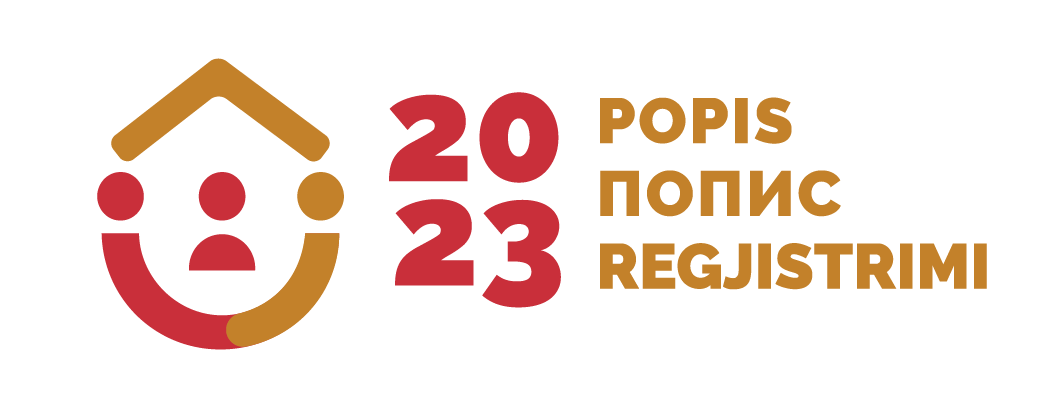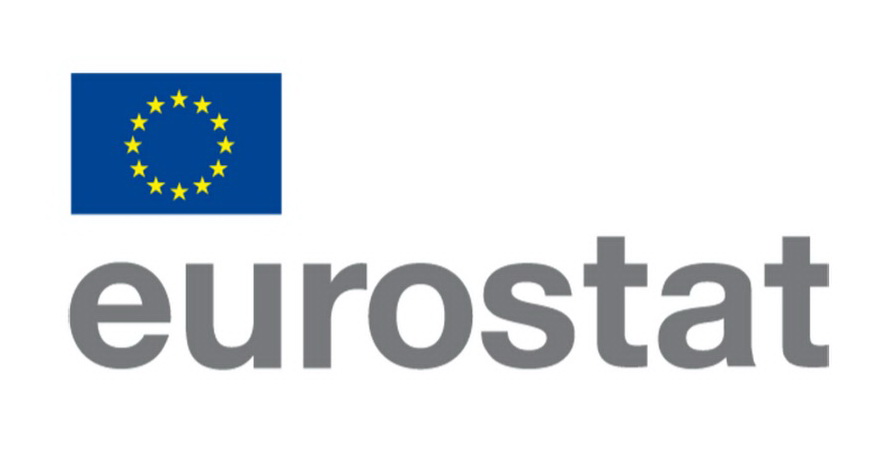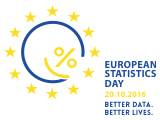| Category: | Demographic and social statistics |
| Area: | Population |
| Survey / data collection: | Population census |
| MONSTAT metadata |
|---|
| Reference metadata |
| 1. Contact |
| 2. Metadata update |
| 3. Statistical presentation |
| 4. Unit of measure |
| 5. Reference period |
| 6. Institutional mandate |
| 7. Confidentiality |
| 8. Release policy |
| 9. Frequency of dissemination |
| 10. Accessibility and clarity |
| 11. Quality management |
| 12. Relevance |
| 13. Accuracy and reliability |
| 14. Timeliness and punctuality |
| 15. Coherence and Comparability |
| 17. Data revision |
| 18. Statistical processing |
| 19. Comment |
Note: For any question on metadata, please contact MONSTAT metadata support.
| 1. Contact Vrh | |
| 1.1. Contact organization: | Statistical Office of Montenegro - MONSTAT |
| 1.2. Contact organization unit: | Demography and migration statistics department |
| 1.2. Contact organization unit: | IV Proleterske 2, 81000 Podgorica, Montenegro |
| 2. Metadata update Top | |
| 2.1. Metadata last certified: | |
| 2.2. Metadata last posted: | 22 October 2020 |
| 2.3. Metadata last update: | 04 February 2020 |
| 3. Statistical presentation Top | |
| 3.1. Data description: | Population census provides a large range of demographic data on size and structure of the permanently resident population of Montenegro at national and regional level, and related demographic changes, such as births, deaths, marriages and divorces, immigration, and emigration. Data are also provided on population and its employment, families, housing, and national or ethnic affiliation. 2003 is the most recent year a population census was carried out in Montenegro. Censuses were also carried out in 1921, 1931, 1948, 1953, 1961, 1971, 1981, and 1991 respectively. Currently, preparations are being made for the Population Census 2011. To ensure international comparability of Population Census 2011 data MONSTAT follows methodology and recommendations issued by the UN, and the EU regarding e.g. contents and data definitions as well as classifications to be used in the data collection. |
| 3.2. Classification system: | Population census results are produced in accordance with relevant national and international classifications: - Regional data by Montenegrin municipalities, - NACE Rev.XX for economic activity, - ISCO 1997 for occupation, - ISCED 1997 for the level of education. |
| 3.3. Sector coverage: | Not applicable. |
| 3.4. Statistical concepts and definitions: | |
| 3.5. Statistical unit: | Inhabitants (persons), households, and dwellings. |
| 3.6. Statistical population: | Total population of Montenegro. |
| 3.7. Reference area: | Montenegro. |
| 3.8. Time coverage: | Data on population and households for 1921, 1931, 1948, 1953, 1961, 1971, 1981, 1991, and 2003 were collected through censuses carried out in respective years. Preparations are being made for the Population Census 2011. |
| 3.9. Base period: | Not applicable. |
| 4. Unit of measure Top | |
| Most results measure absolute number of persons (thousands). Some indicators are reported as rates or growth rates. Some variables are reported in other units, e.g. ages in years. | |
| 5. Reference period Top | |
| The data for Population Census 2011 were entered in the Census forms according to the situation on XX April 2011 at 0.00 p.m. This time frame is the "day of enumeration" and the reference period. As a reply to certain questions, data were entered for the period of one year before the enumeration. | |
| 6. Institutional mandate Top | |
| 6.1. Legal acts and other agreements: | The Law on Official Statistics and Official Statistical System (Official Gazette of Montenegro No 18/12 and 047/19) defines provisions for collection, processing, and dissemination of data. The Law provides to the Statistical Office legal powers to collect and access the data necessary for the implementation of Programme and Annual Plan. The Law gives a priority to the use of administrative data and right of access to individual data that are a result of survey of other official statistical producers. As an annex to legal provisions, Statistical Office has signed several memoranda on cooperation with administrative data providers. |
| 6.2. Data sharing: | Signed agreement on cooperation with the official statistical producers: 1. Customs Administration, 2. Tax Administration, 3. Ministry of Finance, 4. Central Bank of Montenegro, 5. Trilateral agreement (MONSTAT, Ministry of Finance, and Central Bank of Montenegro). International institutions: 1. EUROSTAT, 2. UN organizations, 3. IMF. 4. World Bank |
| 7. Confidentiality Top | |
| 7.1. Confidentiality - policy: | Articles 53-60 of the Law on Official Statistics and Official Statistical System (Official Gazette of Montenegro No 18/12 and 047/19) provide a framework for protection, use, and transmission of confidential data. MONSTAT has produced two comprehensive rulebooks that cover the procedures for individual data protection as well as keeping individual records. With purpose of the meeting legal framework on functioning of security system and statistical confidentiality there was adopted the Rulebook on Keeping Statistical Data by which Manner, Time, Technical Conditions and Organization of Statistical Data Storage to Prevent Their Destroying, Misappropriation, and Unauthorized Use is Regulated as well as the Rulebook on Contents and Manner of Keeping Records on Users of Individual Statistical Data by which contents and manner of keeping records on users of individual statistical data is regular. Pursuant to the Article 59, an access to the confidential data is limited to persons performing duties and tasks of official statistical producer and up to the stage the data are necessary for official statistical production. Persons that performs duties and tasks within official statistical producers must sign the statement on respecting the principle of confidentiality. Law on Official Statistics and Official Statistical System is aligned with the Regulation No 223/2009 and the Regulation (EU) 2015/759 from 29 April 2015 that also regulate confidentiality provisions. The Government of Montenegro adopted the Statement on Commitment of Confidence in Official Statistics (Commitment of Confidence). |
| 7.2. Confidentiality - data treatment: | During and after the Census organisational and technical measures are performed for storage and protection of the Census material. |
| 8. Release policy Top | |
| 8.1. Release calendar: | The Law on Official Statistics and Official Statistical System (Official Gazette of Montenegro No 18/12 and 047/19) stipulates that official statistical producers prepare, update, and publish Statistical Release Calendar. It is published on the website of Statistical Office not later than 20 December for the next year, for all official statistical producers that includes date of releasing statistical data. Any change in date of releasing in the Calendar is published in advance in accordance with the Procedure on Unplanned Revisions. |
| 8.2. Release calendar - access: | http://www.monstat.org/eng/page.php?id=12&pageid=12 |
| 8.3. User access: | General aim of official statistical producer is to meet the needs of users, and to make an access to statistical data to users in an understandable manner, simultaneously and under the same conditions. Statistical Office is obliged to produce and disseminate official statistics in objective, transparent and professional manner, so that all users are equally treated. |
| 9. Frequency of dissemination Top | |
| 10. Accessibility and clarity Top | |
| 10.1. News release: | News releases online, etc. |
| 10.2. Publications: | Statistical Office publishes the following regular publications: 1. Statistical Yearbook, 2. Montenegro in figures, 3. Monthly statistical review. In addition to the above regular ones, Statistical Office publishes also additionally publications. Some of the most important additional publications are as it follows: 1. Women and Men in Montenegro, 2. The most often used statistical data All publication published by Statistical Office are available at the following link: http://monstat.org/eng/publikacije.php |
| 10.3. Online database: | |
| 10.4. Micro-data access: | The Law on Official Statistics and Official Statistical System (Official Gazette of Montenegro No 18/12 and 047/19) regulates rules under which external users can obtain an access to individual data for needs of research. Article 58 defines types of scientific and research organizations that can obtain such data. Providing individual data without identifier is possible only upon a written request of scientific and research institutions, with purpose of performing scientific and research activities as well as international statistical organizations and statistical producers from other countries. Research entity signs the agreement with Statistical Office, and it signs the statement on respecting the confidentiality principle. Official statistical producers keeps a separate records on users and purpose of using the statistical data given to these users. |
| 10.5. Other: | Expect releases, disemination products also are excel tables which are available on link:http://www.monstat.org/eng/page.php?id=392&pageid=57 |
| 10.6. Documentation on methodology: domain: | For the purposes of the census, a methodology for the preparation, organization and conduct of the census was developed. The methodology has been developed in accordance with relevant international documents on the list, namely Recommendations from UNECE / EUROSTAT and Regulatory EC. http://monstat.org/cg/page.php?id=325&pageid=322 |
| 10.7. Quality documentation: | The Law on Official Statistics and Official Statistical System (Official Gazette of Montenegro No 18/12 and 047/19) defines the commitment to quality which ensures that official statistical producers in Montenegro work and cooperate in accordance with the international principles of statistical system quality. Development Strategy and Programme of Official Statistics for 2019-2023 define the objectives of development. One of objectives is Quality management of statistical system and official statistics result process. Pursuant to the ESS Quality Declaration, Article 338 of the Contract on EU Functioning, Regulation 759/2015 and Regulation 223/2009 as well as European Statistical Code of Practice, the following documents are in adoption procedure: 1. Quality Strategy of Statistical Office, 2. Guide for Implementation of Quality Strategy in Statistical Office. 3. Implementation Plan |
| 11. Quality management Top | |
| 11.1. Quality assurance: | Statistical Office has chosen the implementation of elements of TQM (Total Quality Management) model that foster development and improvement of functioning of: - Institution, - Official statistical result production, and - Individual. Within middle-term deadline, Statistical Office has chosen the TQM implementation through the following objectives: 1. Strong commitment to users and other interested parties, 2. Quality statistical processes and products, 3. Professional orientation of staff members, 4. Constant improvements, 5. Reduction of overburden of reporting units. |
| 11.2. Quality assesment: | To ensure international comparability of Population Census 2011 data MONSTAT follows methodology and recommendations issued by the UN and the EU regarding e.g. contents and data definitions as well as classifications to be used in the data collection. |
| 12. Relevance Top | |
| 12.1. User needs: | International users: - Eurostat, - World Bank, - UN organizations, - International Monetary Fund National users: - Ministries and other public administration bodies, -Local government, and -Other local government bodies. - Central bank, - Non-governmental organizations, - Students, -Researchers, - Media. |
| 12.2. User satisfaction: | The Statistical Office has adopted the Quality Management Strategy, the Guidebook to the Implementation of the Quality Management Strategy, as well as the Plan for the Implementation of the Quality Policy. In order to measure the degree to which fulfills obligations towards users and within the new quality policy, the Statistical Office conducted User satisfaction survey. Data collection was carried out through a web survey, in the period from 1 September to 20 October, 2017. The results of the survey are available on the Statistical Office website, link: http://www.monstat.org/userfiles/file/KVALITET/Izvjestaj%20o%20zadovoljstvu%20korisnika%20eng.pdf. |
| 12.3. Completeness: | |
| 13. Accuracy and reliability Top | |
| 13.1. Overall accuracy: | Post-enumeration survey or control of coverage and data quality of the Census???????????results???.??? |
| 13.2. Sampling error: | Not applicable. |
| 13.3. Non-sampling error: | a) Coverage errors Non-existent or unhabited houses or population no longer living in the country (overcoverage?). Under-coverage problems caused by the time lag in registering new residents or newly constructed dwellings (?). Field work problems during data collection????????????.. b) Measurement errors ????????????????????????.. c) Processing errors Between data collection and the beginning of statistical analysis for the production of statistics, data must undergo a certain processing: coding, data entry, data editing, imputation, etc. d) Non-response errors ????????????????????????? |
| 14. Timeliness and punctuality Top | |
| 14.1. Timeliness: | The census was conducted from 1 to 15 April 2011. Preliminary results were published on May 13, 2011. The final results of the census were published on 12 July 2011. Thereafter, processing continued and processing and dissemination would be completed by the end of 2013. |
| 14.2. Punctuality: | |
| 15. Coherence and Comparability Top | |
| 15.1. Comparability - geographical: | Geographic comparability is possible with all countries in the region that have implemented and organized the census following international recommendations regarding the timing of the census and the rules and definitions used in the census. |
| 15.2. Comparability over time: | Definitions of the permanent, i.e. total population are not fully comparable between the Census 2003 and previous censuses. In population censuses 1971, 1981, and 1991, permanent population referred to Montenegrin citizens on a temporary stay abroad as well as their family members accompanying them. It means that each inhabitant had to be enumerated in the permanent residence place, even if absent at the census time for any reason (trip, education or field work, work abroad, compulsory military service, medical treatment, imprisonment, etc.). Data about absent persons were given by household members. In the 2003 Census, according to international recommendations and standards, total population included, besides the resident population in country, Montenegrin citizens who have resided abroad for less than a year as well as foreign citizens and their family members who have resided in Montenegro for more than a year. Single households were also included in total number of households and relate to a person living alone and spending his/her income (regardless the source) to cover basic living costs. Various approaches in determination of the presence of workers and other active persons between population censuses 1981, 1991, and 2003 and other censuses influenced the structure of results about number and size of households because previous post-war censuses considered these persons as separate households in their place of work, no matter whether they participated in supporting or were the only supporters of their families residing in another place. Agricultural population: In the 1953, 1961 and 1971 censuses agricultural population included economically active persons with an occupation in the following activities: agriculture, fisheries, and water supply as well as all persons supported by economically active persons. Therefore, the criterion for grouping economically active population in agricultural population was an involvement in respective activities, regardless of the type of occupation. In the 1981 and 1991 censuses, the type of occupation of economically active persons was the basic criterion for classification into agricultural population. According to methodology of the 1981 and 1991 censuses, the agricultural population refers to resident population whose occupation can be classified into "farmers" and "fishermen and hunters" according to the Classification of Occupations as well as to all persons supported by them. |
| 15.3. Coherence - cross domain: | Population Census figures may differ from those available through National Accounts or Labour Force Survey. |
| 15.4. Coherence - internal: | Data are checked for internal consistency. |
| 17. Data revision Top | |
| 17.1. Data revision - policy: | Statistical Office has adopted the revision policy and it is available on the website http://www.monstat.org/eng/page.php?id=1411&pageid=1411 |
| 17.2. Data revision - practice: | |
| 18. Statistical processing Top | |
| 18.1. Source data: | |
| 18.2. Frequency of data collection: | every ten years. |
| 18.3. Data collection: | Data were collected on tha way that the enumerator filled out paper forms on basic data obtained from the respondents. Coverage was provided by a door-to-door interview. |
| 18.6. Adjustment: | |
| 19. Comment Top | |







